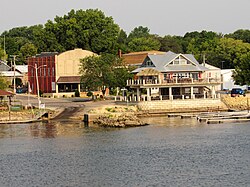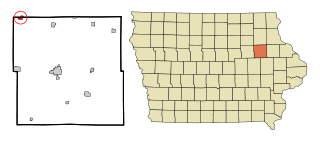
Fairbank is a city in Buchanan and Fayette counties in the U.S. state of Iowa. The population was 1,111 at the time of the 2020 census.

Glidden is a town in Carroll County, Iowa, United States. The population was 1,151 at the time of the 2020 census.

Guttenberg is a city in Clayton County, Iowa, United States, along the Mississippi River. The population was 1,817 at the time of the 2020 census, down from 1,987 at the 2000 census.

Wheatland is a city in Clinton County, Iowa, United States. The population was 775 at the time of the 2020 census.
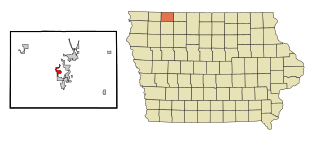
Wahpeton is a city in Dickinson County, Iowa, United States. The population was 345 at the time of the 2020 census.

Balltown is a city in Dubuque County, Iowa, United States. It is part of the Dubuque, Iowa Metropolitan Statistical Area. The population was 79 at the 2020 census, up from 73 in 2000. Balltown is home to Breitbach's Country Dining, Iowa's oldest restaurant and bar, which was founded in 1852 and twice rebuilt by the community, following its destruction by fire in 2007 and 2008.
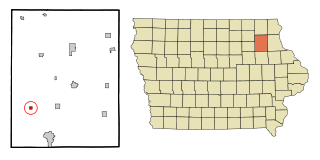
Westgate is a city in Fayette County, Iowa, United States. The population was 192 at the time of the 2020 census, down from 234 in 2000.

Martinsburg is a city in Keokuk County, Iowa, United States. The population was 110 at the time of the 2020 census. The only businesses open to the public in Martinsburg is McBeth Wrecker and Auto Service and a gas station/convenience store.

Burt is a city in Kossuth County, Iowa, United States. The population was 418 at the 2020 census.

Shambaugh is a city in Page County, Iowa, United States. The population was 159 at the time of the 2020 census.

Montezuma is a city in Poweshiek County, Iowa, United States. The population was 1,442 at the time of the 2020 census. It is the county seat of Poweshiek County.
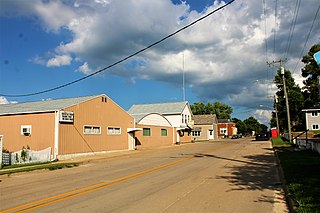
Dixon is a city in Scott County, Iowa, United States. The population was 202 at the time of the 2020 census.

Donahue is a city in Scott County, Iowa, United States. The population was 335 at the 2020 census. The city has a mayor-council form of government.

Eldridge is a city in Scott County, Iowa, United States. The population was 6,726 in the 2020 Census; Eldridge is a rural community and part of the Quad Cities metropolitan area.

LeClaire is a city in Scott County, Iowa, United States. The population was 4,710 in 2020, a 65.4% increase from 2,847 in 2000, making it one of the fastest-growing communities in the Quad Cities. LeClaire is considered a suburb and part of the Quad Cities Metropolitan Area, which includes the area of Davenport and Bettendorf, Iowa, and Rock Island, Moline, and East Moline, Illinois.

Maysville is a city in Scott County, Iowa, United States. The population was 156 at the time of the 2020 census.

Cumming is a city in Warren County, Iowa, United States. The population was 436 at the time of the 2020 census. It is the hometown of former Senator Tom Harkin.
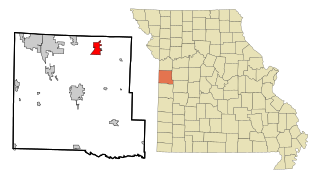
Pleasant Hill is a city in Cass and Jackson counties, Missouri, United States. The population was 8,113 at the 2010 census. It is part of the Kansas City metropolitan area.
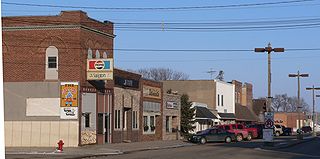
Laurel is a city in Cedar County, Nebraska located at the merger of Highway 20 and Highway 15 in the northeast corner of the state. Laurel sits roughly 40 miles east of Norfolk, Nebraska, west of Sioux City, Iowa, and south of Yankton, South Dakota. Wayne State College in Wayne, Nebraska is 15 miles south of Laurel. Its population was 975 at the 2020 census.

Dows is a city in Franklin and Wright counties of the U.S. state of Iowa. The population was 521 at the time of the 2020 census. The town was incorporated on May 3, 1892.
